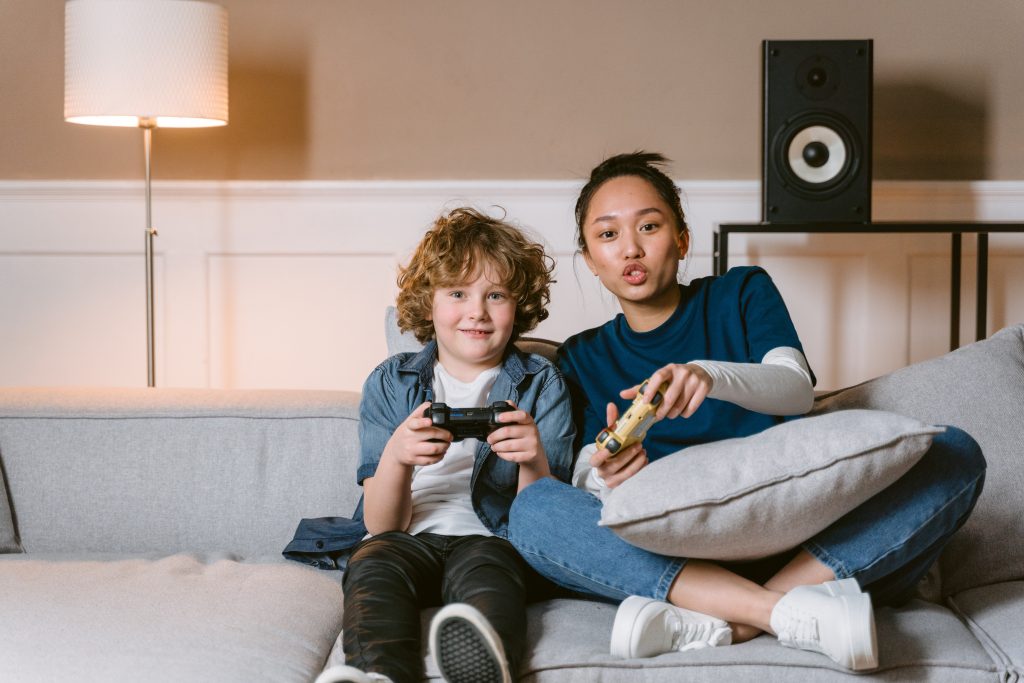How to manage your kids gaming
Kids love games!
We live in a time where gaming has never been more accessible, more interesting, more engaging and more exciting than ever before!
Whether its video games played on your phone, on a console, or on a PC, or tabletop games played in the “real” world, we have never before seen such a diverse range of games available for us.
However, with such advances in gaming, and technology, there comes draw backs, and like any other form of entertainment, it must be managed unless it becomes a problem.
There have been plenty of articles in the media about video game addiction, violence in games and the issues around online gaming. But, like pretty much everything else in life, so long as there is a healthy, balanced approach to gaming, everyone can enjoy and reap the benefits of this amazing medium.

Balanced Gaming and Game Time

One of the keys to healthy gaming, is balance (again, like most of things in life!).
Ensuring that your kids have enough gaming time allocated during the week so they can enjoy themselves, yet not too much that it starts to take away from physical play time, homework, socialising, etc, is very important.
Playing video games can be very stimulating, especially playing fast paced games. Playing video games for too long in one sitting, or too often, can lead to kids being hyper-stimulated, increasing the risk of sleep issues, trouble calming down, reactionary behaviour and anxiety. Read more.
Here are some ways of managing game time:
- Use parental control features to limit play time (read more below),
- If possible, ensure the device used to play on is in a shared room, so you can observe play time
- Be open and honest when explaining the physiological effects of over stimulation
- If possible, play video games together with your kids
- Encourage playing tabletop games as a way to break up screen based play time.
Online Gaming and social interaction
We live in an increasingly online world, and social interaction is no different.
Many games are online now, and offer multi-player experiences where players can communicate with each other in some way.
This is a fantastic way for kids to play together with their friends online, but also posses a potential risk of cyber-stalking, online bullying, and social overload.
Here are some tips to ensure your kids are safe online:
- Openly and honestly explain the reality of cyber-stalking and online bullying,
- Use “auto-decline”, or “private user” features on many popular online games to ensure not just anyone can send a friend request (read more below),
- If possible, ensure your kids game in a shared environment where you can observe online interactions.

Parental Controls

The key tool for any parent wanting to manage their kids gaming is parental controls.
Most devices have some form of parental control that can be switched on to allow some form of governance.
Parental control systems can be complicated to setup, feel free to contact us and we can help you navigate your way around most systems.
Click here to read a detailed guide on how to enable parental controls on almost any device!
Some common parental control features
Password Protection
At its simplest, most parental controls allow the creation of a PIN or password that must be entered to use the device.
This feature is an easy way to ensure that your kids cannot game whenever they want, and means you determine when they play.
However, it means you must manually tell them when to stop their play session, and provides no control in terms of what games your kids are playing, and who they are interacting with online.
Time Management
A more sophisticated feature to control play time is the time management feature.
This general allows you to set the amount of time allowed per day, and some parental controls even allow you to set start and stop times.
This ensures you control how much play time your kids get, and is automated so your kids don’t feel too controlled!
Content Rating Restrictions
Just like movies and TV, video games are given age ratings such as PG, MA, R, etc.
Most parental control systems allow you to limit access to games that are under a certain rating, allowing you to ensure your kid doesn’t accidentally (or not!), download and play inappropriate games.
Where possible, be aware of what games have been installed on your gaming devices so you can ensure they are appropriate, a quick Google search will usually help you determine what type of game it is.
Game Together!
The best way to ensure healthy gaming, is to game together!
Now that doesn’t mean parents need to start playing video games they aren’t interested in, but find ways to enjoy gaming as a family, or together with your child.
If you want to play video games together with your kids, there are many different types of games that offer 2 player support, give some of them a try.
Tabletop games, card games, puzzles and lego are all great ways to have fun, relax, and connect with your kids through play.
For kids that are more mature, or into more mature games, there are plenty of interesting and engaging tabletop games, with more in-depth themes, available to be enjoyed.
Playing games together has the benefit of give you a chance to talk about your kids gaming, explaining what healthy gaming is, and getting to know what your kids are playing.
Browse the tabletop games we have available on our shop.

